The Witcher 3’s Ray Tracing is a Game Changer
By
Austin Moeller
A next-gen update for The Witcher 3: Wild Hunt adds a slew of graphical improvements that make this masterpiece look like a brand-new game.
A next-gen update recently released for The Witcher 3: Wild Hunt, included with a Complete Edition package on PC, PS5, and Xbox Series X/S. This comes as a free upgrade for those who already own the game, but includes all official content and DLC for first-time players. While this updated version of The Witcher 3 brings gameplay tweaks and an all-new quest for fans of the Netflix adaptation, the visual upgrades are possibly the most substantial. The addition of ray tracing and other graphical improvements like 4K textures and improved shadows demonstrate a great approach to making an old game feel new again.
The Witcher 3: Wild Hunt is one of the highest-rated and well-renowned video games of all time, so it’s all the more impressive that developer CD Projekt Red continues to find new ways to improve upon it more than seven years after release. Having originally launched for Xbox One and PS4 in 2015, the Complete Edition and its visual upgrades bring this iconic game into the modern era, including ray-traced global illumination and ray-traced ambient occlusion on console, with PC adding ray-traced reflections and shadows alongside new Ultra+ settings.
RELATED: What Cyberpunk 2077’s Phantom Liberty DLC Could ‘Steal’ From The Witcher 3
Ray tracing and high framerates have been at the forefront of discussions regarding performance and graphical fidelity in recent years, especially among more hardcore PC enthusiasts looking to obtain the best possible visuals in their games. These features have also been a major bullet point in marketing the newest generation of consoles and GPUs. Just in the last few years, several games have received ray-tracing features after release, including Metro Exodus, Doom Eternal, and Fortnite. Even less modern games like Portal and Quake have received updated versions with various ray tracing features.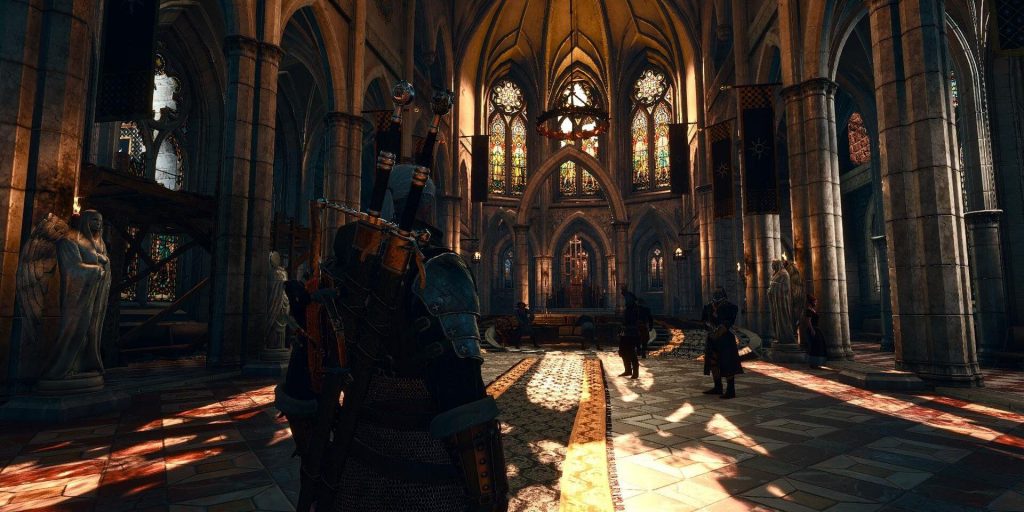
The ray tracing added to console versions of The Witcher 3 (RTGI and RTAO) allow more accurate bounce lighting and shading between different surfaces, objects, and characters. This means sources of light now realistically produce shading and coloration within the environment. For example, if there is a candle in a room with a red banner, the light will now slightly color the room with a red hue. In outdoor environments, the sunlight will bounce off the sand onto nearby rocks and wagons, with appropriate ray-traced shadows and reflections on PC that dramatically enhance their quality and accuracy.
When CD Projekt Red released the notorious Cyberpunk 2077, it served as a prime example of how graphics and performance can directly affect the quality of a game. To put this into perspective, the PC version of the game has an average review score of 86 on Metacritic, while the PS4 and Xbox One versions are at 57 and 61, respectively.
This perfectly demonstrates the impact that improved graphics and performance can potentially have on the player experience.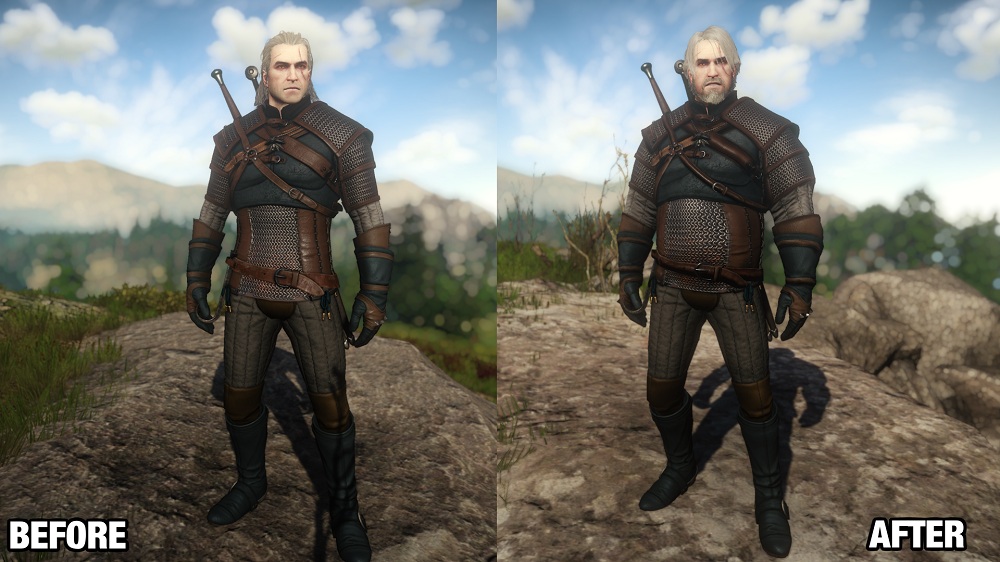 With these ray tracing additions in The Witcher 3, the various environments feel more grounded and realistic, which ultimately improve players’ immersion and make it feel like a brand-new game across already impressive environments.
With these ray tracing additions in The Witcher 3, the various environments feel more grounded and realistic, which ultimately improve players’ immersion and make it feel like a brand-new game across already impressive environments.
All of these combined graphical changes drastically affect the visuals, and they take The Witcher 3 from being a good-looking last-gen game to a true modern title with advanced features. The Witcher 3 was already a certified masterpiece in the eyes of many, so graphical updates, gameplay changes, and new content make the Complete Edition a definitive version of the game. With talks of CD Projekt Red using Unreal Engine 5 for all future projects for The Witcher franchise, many fans are eager to see what the esteemed developer can accomplish in the future.
The Witcher 3: Wild Hunt is available now for PC, PS4, PS5, Switch, Xbox One, and Xbox Series X/S.
MORE: Comparing God of War Ragnarok’s Side Quests to The Witcher 3’s
Subscribe to our newsletter
Related Topics
- GR Originals
- CD Projekt Red
- The Witcher
- The Witcher 3
- PS5
- Xbox Series X
- PC
- Switch
- PS4
- Xbox One
About The Author
Austin is a passionate father and gamer who loves his family, video games, technology, and cars.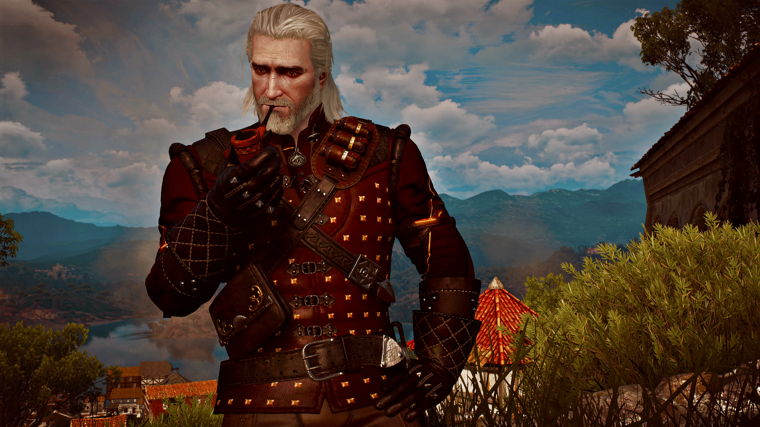 Sonic Adventure is his favorite video game of all time, as the feeling of speed, freedom, exploration, and discovery heightened his love for video games at a young age. He also believes virtual reality is the future of gaming technology, media consumption, and online social interaction, with some of his favorite VR games being Half-Life: Alyx and Resident Evil 4 VR.
Sonic Adventure is his favorite video game of all time, as the feeling of speed, freedom, exploration, and discovery heightened his love for video games at a young age. He also believes virtual reality is the future of gaming technology, media consumption, and online social interaction, with some of his favorite VR games being Half-Life: Alyx and Resident Evil 4 VR.
After gaming for 25 years and working countless roles in fields that were never truly fulfilling, Austin is thrilled to pursue his dream of entering the video game industry as a content writer. With a Bachelor of Arts in Corporate Communication and extensive knowledge of video game history, culture, and technology, Austin plans to utilize his unmatched work ethic, willingness to learn, and ability to work under strict deadlines to consistently produce high quality gaming content.
The Witcher 3 next-gen update tested: worse performance, even without ray tracing
Update: CDPR have released a PC hotfix that returns non-ray traced performance to its previous levels, with RT performance getting a boost as well. Hooray! Though it’s still quite stuttery and it appears AMD FSR is causing crashes. Less hooray! The original article, based on test results taken before the hotfix, continues below:
Hooray! Though it’s still quite stuttery and it appears AMD FSR is causing crashes. Less hooray! The original article, based on test results taken before the hotfix, continues below:
Earlier today we brought news that The Witcher 3: Wild Hunt’s next-gen update – a seemingly juicy serving of new ray tracing, DLSS/FSR upscaling, and assorted quality of life features – had in fact arrived in a bit of a mess. To assess the damage, I’ve spent some time with it myself, and can confirm: it ain’t great! Besides the devastating frames-per-second toll that the RT effects take, it seems far more crash-prone than I ever remember The Witcher 3 being in the past, and performance in general is just worse than it was pre-update.
This isn’t my usual performance analysis/best settings guide routine, because in this case I kinda think it’s better to wait and see if CD Projekt Red can tame the performance problems with hotfixes and future updates, which they’ve now acknowledged they’re looking into.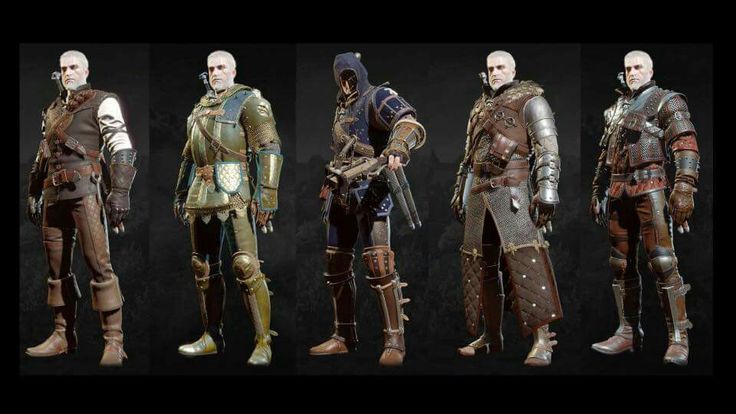 More on these woes below, and I also chatted to Liam about our shared inability to wrangle a good framerate out of the new settings:
More on these woes below, and I also chatted to Liam about our shared inability to wrangle a good framerate out of the new settings:
Watch on YouTube
Liam’s had similar issues with The Witcher 3’s next-gen update performance.
First off, some balance. With all four of the new ray traced options enabled – that’s global illumination, reflections, shadows, and ambient occlusion – The Witcher 3 does look noticeably better. The iffy screen space reflections on bodies of water are replaced, no longer jerking across the surface depending on where you’re looking, and the improved ambient occlusion give added depth to detailed interiors.
It’s great to see FSR and DLSS involved, too. In an ideal world, these performance boosters would be in every PC game, and while DLSS looks crisper in its Balanced and Quality modes than FSR does, their joint inclusion means every GPU make is covered. For RTX 4080 and RTX 4090 owners, there’s also the option of enabling DLSS 3 with frame generation.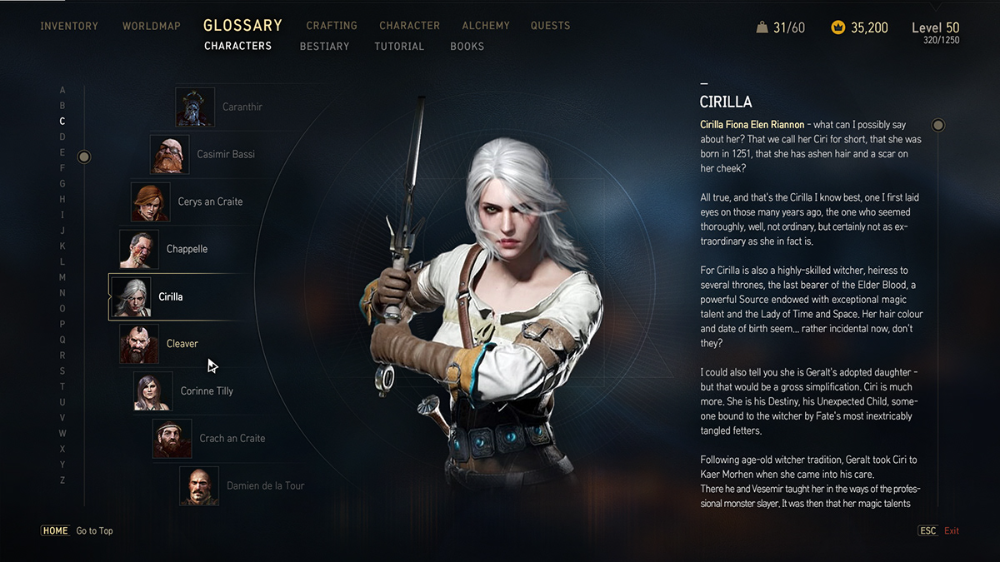 It’s a commendably substantial update, graphics-wise.
It’s a commendably substantial update, graphics-wise.
Caption
Attribution
Sadly, even upscaling can’t save most GPUs from buckling under the weight of Wild Hunt’s ray tracing additions. I’ve mainly been testing with a high-end RTX 3070, installed alongside an Intel Core i5-11600K and 16GB of DDR4 RAM, and at 1440p, the all-in RT Ultra preset averages a mere 27fps. With DLSS on Balanced mode (and this is DLSS 2, not DLSS 3 with its interpolated bonus fames), that only rose to 34fps.
After bothering Katharine for her old benchmark spreadsheets, I found she’d previously averaged 102fps from the RTX 3070 when running the game’s Ultra preset back in 2020. 27fps therefore represents a 74% ray tracing tax, or 67% when using Balanced DLSS to make it just about playable. But it’s even worse than that, because I re-ran the Ultra preset with this next-gen update and averaged only 90fps. So the internet grumbles are true: The Witcher 3 really does run slower after this patch, even if you completely ignore its most hardware-intensive features.
So the internet grumbles are true: The Witcher 3 really does run slower after this patch, even if you completely ignore its most hardware-intensive features.
Even dropping to 1080p – surely a resolution at which the RTX 3070 would usually be overkill – produced some deeply underwhelming results. The RT Ultra preset? Still only 38fps. RT Ultra with Balanced DLSS? That was 54fps, a better boost than I got at 1440p, but at the cost of more noticeably blurred visuals due to the upscaler’s render resolution dropping even lower than 1080p. And once again, the game ran worse on the standard Ultra preset than it did in 2020, an average of 115fps lagging behind the 133fps that Katharine recorded.
There’s another preset simply named RT, which keeps the RT Ultra preset’s ray traced global illumination but switches it off for reflections, shadows, and ambient occlusion. Back at 1440p, a combination of the RT preset and Balanced DLSS afforded the RTX 3070 a more reasonable 51fps. However, that still means you’re roughly halving overall performance to get the least individually noticable ray tracing effect of the bunch.
However, that still means you’re roughly halving overall performance to get the least individually noticable ray tracing effect of the bunch.
RT Ultra does look great. Just… not always in motion.
Chances are you’d have a better time with an even faster/newer/more expensive GPU, but when I tried to find out by installing the brand spanking new AMD Radeon RX 7900 XTX, the game couldn’t avoid crashing long enough for me to grab a single meaningful benchmark. Yes, stability is an issue with this update as well. The Radeon RX 7900 XTX got the worst of it, conking out to desktop every single time, but the RTX 3070 also saw more than its share of crashes: random crashes, crashes when changing settings, crashes when alt-tabbing. Not good.
Obviously, such regular wonkiness needs urgent fixing on CDPR’s end. Though for me, the most egregious failure of the next-gen update is the fall in non-ray traced performance. It’s one thing to sit in an RTX 30 series tower and bemoan dropping to 90fps, but there will be Witcher 3 players out there with graphics cards like the GTX 1050 Ti or Radeon RX 570, and thus need every frame they can get. Ray traced effects were never going to be viable for lower-end systems but for them to face an FPS cut anyway is immensely disappointing.
Ray traced effects were never going to be viable for lower-end systems but for them to face an FPS cut anyway is immensely disappointing.
Luckily, you can roll back The Witcher 3 to an earlier version if the next-gen update isn’t working out for you. Not as lucky as we’d be if it didn’t botch anything in the first place, but hey.
The video clearly showed how ray tracing changed the graphics in the next-gen version of The Witcher 3 on RTX 3080
There is very little time left before the release of the next-gen version of The Witcher 3, and therefore more and more videos appear on the network, which show, how much the project schedule has changed from the original in 2015.
In the first video, the author compared the graphics of the game with and without ray tracing enabled. The game was launched on a PC with an NVIDIA RTX 3080 graphics card.
In the second video, you can see a comparison of the next-gen version on PC, PS5, Xbox Series S and Xbox Series X.
Here are the conclusions of the author of the video:
- Ray tracing mode on consoles only applies to global illumination sun, moon and fire. Xbox Series S does not support ray tracing. This mode also improves the quality of SSR reflections;
- PS5 has better SSR reflections in performance mode compared to Xbox Series X in some areas; nine0008
- Xbox Series S has lower settings. The performance mode reduces the draw distance, the quality of vegetation and shadows;
- Ray tracing on PC shows a noticeable difference. This is the only version with ray tracing for global illumination, shadows and reflections;
- On PC, ray tracing has some visual bugs in shadows and reflections. These are expected to be fixed in future patches;
- Xbox Series X performs better with ray tracing, but PS5 offers better performance in speed mode; nine0008
- PS5 has the best load times;
- In some areas, the resolution of the Xbox Series X is higher than that of the PS5 and vice versa, but in general both versions have the same average resolution;
- On Xbox Series S I recommend Quality mode, on PS5 and Xbox Series X I would choose Performance mode;
- Hairworks still has an advantage in the PC version in terms of fur on some models.
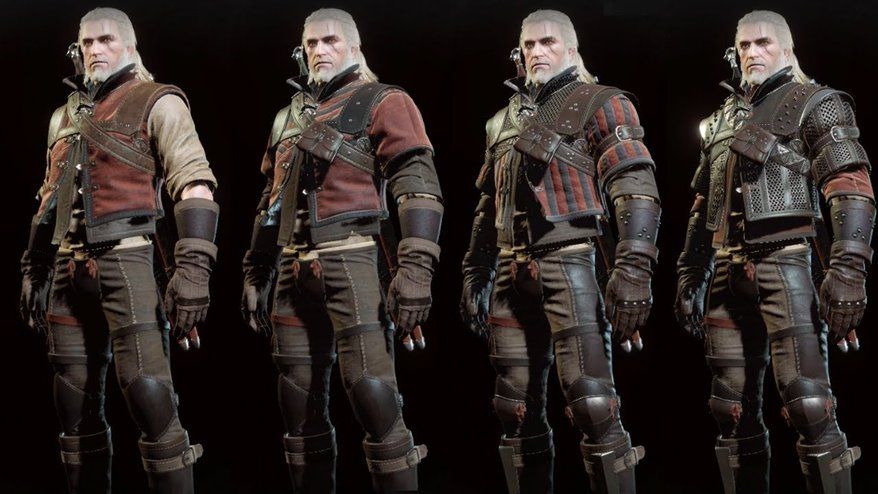 However, this method does not work correctly with global illumination and ray tracing. nine0008
However, this method does not work correctly with global illumination and ray tracing. nine0008
In the third video, the author focused on comparing the original version of The Witcher 3 for PS4 (as well as PS4 Pro) and the updated version for PS5.
Here’s what he came up with in this comparison:
- The ray tracing mode only applies to the global illumination of the sun, moon, and fire. No RT for reflections and shadows;
- This ray tracing improves shadow area contrast, luminance contrast, and ambient shading of some elements; nine0008
- Ray tracing also improves SSR reflections;
- Performance mode dispenses with these lighting enhancements, offering medium resolution and a stable 60 FPS;
- Raytraced mode has problems with shadows in the distance at the beginning of the game. This is expected to be fixed;
- Load times have been improved on PS5, reducing load times to less than 15 seconds and fast travel from 5 to 10 seconds.
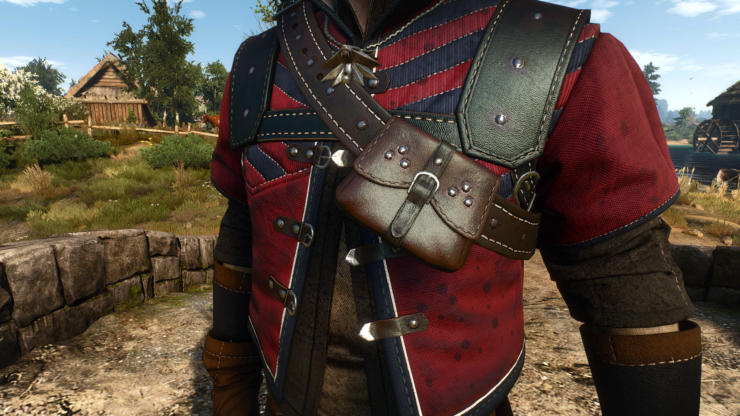
Notably, CD Projekt RED also recently published their comparison of the PS4 and PS5 versions of the game using Skellige as an example.
PS4PS4
PS5PS5
Recall that the next-generation version of The Witcher 3 will be released on December 14th. The exact release time in Russia can be found here. The update will be free for all owners of Complete Edition.🍄 Do not Google The Last of Us!
- CD Projekt RED revealed the exact time when the next-generation version of The Witcher 3 will be released in Russia
- CD Projekt RED released an hour and a half video with footage from The Witcher 3 remaster
- After 7 years, The Witcher 3 will fix the main problem of the Russian version
CD Projekt Red is ready to release a free next-gen update for the award-winning game of the year, Witcher 3 Wild Hunt, this Wednesday, December 14, 2022 at 1am CET.
 The update will bring major graphical and quality updates to the game as well as two major expansions, Heart of Stones, Blood and Wine, on PlayStation 5, Xbox Series X|S and PC. nine0004
The update will bring major graphical and quality updates to the game as well as two major expansions, Heart of Stones, Blood and Wine, on PlayStation 5, Xbox Series X|S and PC. nine0004 PlayStation 4, Xbox One and Nintendo Switch versions will also receive an update bringing new features. After the update, the game will be upgraded to version 4.0 and the Game of the Year edition will be replaced with the Complete Edition. With that said, let’s take a look at the patch notes.
The Witcher 3 is undoubtedly one of the best CD Project Red games. The third chapter of Geralt’s journey follows the White Wolf on his journey to find Ciri and take part in the Wild Hunt. nine0004
The Witcher 3 next-gen update brings major visual design changes, including ray tracing, as well as updates across the board with some minor new content. The full changelog for The Witcher 3 is as follows:
PC and Next-Gen exclusives
- Added a beam rendered with global illumination and ambient occlusion.

- In addition, PC players with compatible hardware have the additional ability to enable ray-traced reflections and shadows. nine0017
- Various mods and mod-inspired content have been added to the game to improve the visuals and overall quality of the game. We’ve included some community-created favorites in addition to our own modifications in areas such as environmental and cutscenes improvements, realistic sidewalks, and many decor improvements.
- Community-made and community-inspired mods include:
- The Witcher 3 HD Reworked Project by HalkHogan
- HD Monsters redesigned by Denroth
- Real-time immersive cutscenes by teiji25
- Nitpicker Patch by chuckcash
- World map fixes by Terg500
- Increased the texture to 4K for various characters, including Geralt, Yennefer, Triss, Ciri, Eredin and more.
- All main characters, including Geralt, now drop high resolution self-shadowing even outside of cutscenes.
 In addition, clipping hair through armor has been fixed, as well as some other armor clipping issues. nine0017
In addition, clipping hair through armor has been fixed, as well as some other armor clipping issues. nine0017
- Environmental improvement:
- Added a new type of weather — «Grey Sky»
- Updated sky textures
- Vegetation and water improvement
- Various grid improvements
- Some VFX favorites improved
- Updated global environmental lighting
- Added AMD FidelityFX™ Ultra High Resolution (FSR) 2.1
- Added a photo mode that allows players to take amazing pictures in the world of The Witcher 3.
- Added the ability to pause the game during cutscenes.
- Added an alternate camera option that is closer to the player character and more dynamically responsive to combat and movement. You can find this new setting in Options → Gameplay under Exploration, Combat and Mounted Camera Distance.
PC-Specifc
- Added «ULTRA+» graphics settings on PC, greatly improving the visual fidelity of the game.
 Graphic settings available on ULTRA+ affect:
Graphic settings available on ULTRA+ affect: - Number of background characters
- Shadow quality
- Grass Density
- Texture quality
- Foliage Visibility Range
- Terrain quality
- Water quality
- Detail level
- Added support for DLSS 3. Only available on compatible hardware.
Next Generation Console Specifc
- Improved overall graphics quality on next generation consoles. Including improved textures, improved accuracy, shadow quality, longer draw distances, and crowd density. nine0017
- Ray Traced Mode — Provides ray traced global illumination and ambient occlusion with dynamic resolution scaling targeting 30 fps for PlayStation 5 and Xbox Series X.
- Performance Mode — Provides smoother 60fps gameplay with dynamic resolution scaling for PlayStation 5 and Xbox Series X.
- The Xbox Series S version does not have ray tracing features.
 Quality mode delivers higher resolution and better image fidelity at 30fps, while performance mode targets 60fps and prioritizes smoother gameplay over visual quality. nine0017
Quality mode delivers higher resolution and better image fidelity at 30fps, while performance mode targets 60fps and prioritizes smoother gameplay over visual quality. nine0017
- Implemented the use of adaptive triggers and haptic feedback on PS5 DualSense controllers.
- Added activity maps for PS5.
Online Functions
- Added Cross Progression between platforms. Your latest saves will be automatically uploaded to the cloud so you can easily pick up where you left off on other platforms. Cross progression provides the last save for each save type. This feature becomes available after logging into your account. nine0017
- By subscribing to MY REWARDS in The Witcher 3: Wild Hunt, players can receive:
- Swords of the Nine-Tailed Vixen
- Armor of the White Tiger of the West
- Dol Blathanna Armor Set
- Roach card
Details on how to redeem rewards will be available from December 14 at 1:00 am CET at thewitcher.
 com/my-rewards.
com/my-rewards.
Extra content
- Added new side quest In The Eternal Fire’s Shadow in Velen. The awards are inspired by Oillix’s The Witcher series .
- Added an alternate skin for Dandelion inspired by the Netflix series The Witcher . You can enable it in Settings → Gameplay.
- Added an alternate Nilfgaardian Armor set inspired by the Netflix series The Witcher . You can enable it in Settings → Gameplay.
- Added Chinese and Korean voice acting. Availability on consoles varies by region. nine0017
- Various improvements and changes to the Russian voice acting, including fixes for fast/slow lines in the vast majority of scenes.
Changing the quality of life
- Added the option to quickly bring signatures. This allows you to switch signs and cast without opening the radial menu. You can find it in Options → Gameplay.

- A new default map filter has been added. The new filter hides some icons like «?» and boat icons to reduce the clutter of icons on the map. These icons can be re-enabled using the All map mode toggle. nine0017
- Adjusted the minimum drop height to allow the player to survive falls from higher heights.
- Herbs can now be looted instantly with a single interaction — no additional loot window.
- Added options that dynamically hide the minimap and quest targets when not in combat or using Witcher senses. You can find it in Options → Video → HUD Configuration → Hide Minimap While Exploring and Hide Targets While Exploring. nine0017
- Added the ability to walk slowly when playing with a controller. You can now walk slowly by slightly pushing the left stick forward.
- Added an alternate sprint mode option when playing with a controller. It is activated by pressing the left joystick. You can find it in Settings → Controls.
- Added ability to make target block unaffected by camera inversion.
 You can find it in Settings → Controls.
You can find it in Settings → Controls. - Improved the radial menu so that bombs, bolts and pocket items can now be switched dynamically without opening the inventory. nine0017
- Added the ability to scale the font size for subtitles, NPC chatter, and dialogue selection. You can find it in Settings → Video → HUD Configuration.
- Various other minor fixes, tweaks and quality of life changes have been added, including several secrets to be discovered by players.
Gameplay
- Added mod Full Combat Rebalance 3 by Flash_in_the_flesh which includes balance changes and various gameplay fixes. We’ve taken a curated approach to this mod, with some elements further tweaked from what you’ll find in the default mod, while other elements have been omitted. nine0017
- Scavenger Hunt: Wolf School Gear — Fixed an issue where the chest in the Signal Tower could not be opened.
- From Ofier’s Distant Shores — Fixed an issue where the diagram in the chest in the bandit hideout could be missing.

- Added a beam rendered with global illumination and ambient occlusion.
